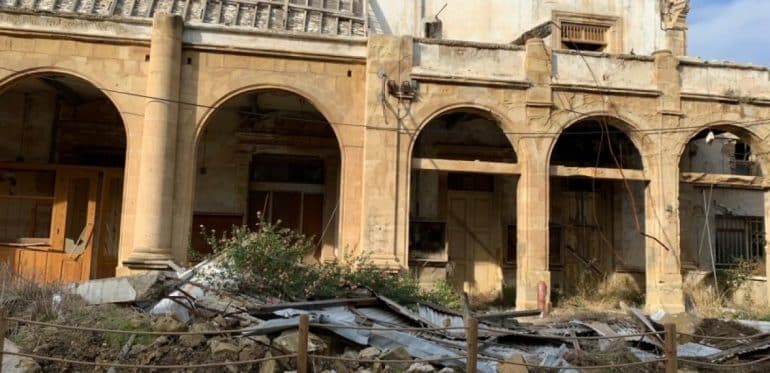Sunday noon at the roadblock of Agios Dometios in Nicosia. Cars with Greek Cypriots who must show a passport to visit Famagusta form queues.
Read the full report of the Greek newspaper "Avgi" by journalist Alexandra Christakaki (4/12/2022)
The Turkish Cypriot guard does not allow entry to those with handwritten police IDs with Greek characters. He shows them the way back to a free Cyprus. A show of force by the occupying forces. Cypriots visit the formerly occupied land of Famagusta and wander the two asphalted streets of the walled city that Erdogan demarcated with red ribbons for two years creating the illusion of return. Turkish and Turkish Cypriot flags fly everywhere. In the background on the left, the occupation flag is "engraved" on the body of Pentadaktylos, and even illuminated at night so that no one forgets the invasion.
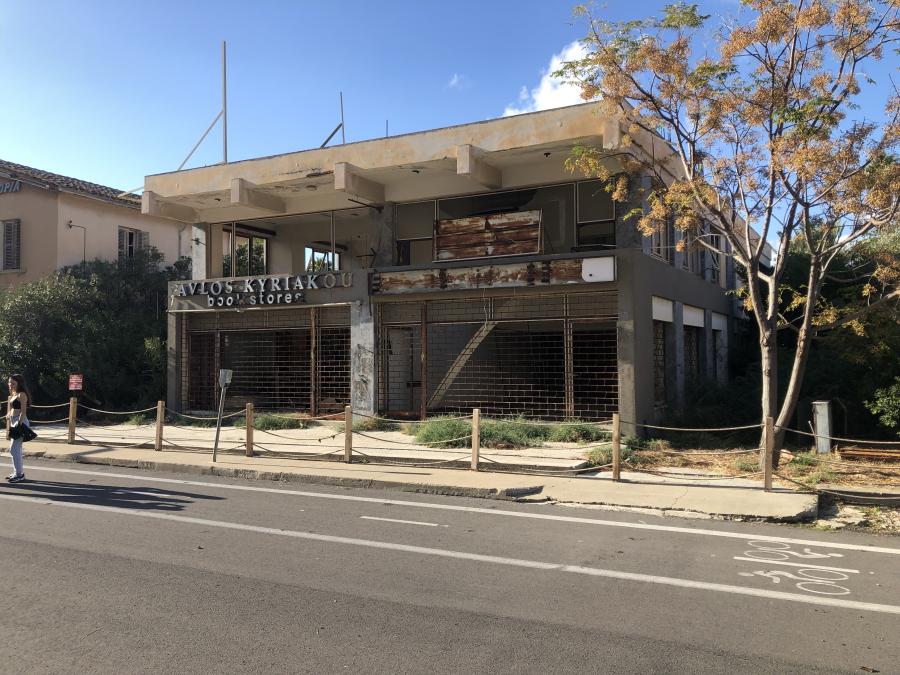
Nature itself has no borders. Crossing the Mesaoria Valley, a building frenzy, newly built apartment complexes, new maisonette settlements to accommodate the 25.000 students of the Eastern Mediterranean University who come from many European countries, branches of foreign banks, vast agricultural lands with agricultural machinery coming and going, dozens camps with a red no-photograph sign and many new mosques, their minarets standing out through the settlements.
A careful eye discerns the existence of mixed villages before 1974. A trademark, the mosques next to the churches with their "mutilated" crosses. 580 churches in the occupied territories were captured, destroyed, looted or converted into mosques, while since 2003 some have been restored as cultural heritage monuments, but not as places of worship. The keys to these churches are in the hands of the Turkish Cypriot community leader.

Not a single sign
In about an hour we enter a big city. No sign informs us of the city that welcomes us. It is the beautiful Famagusta. With its medieval castle, the cathedral of Agios Nikolaos, dating from the 14th century, its beautiful port, the old town.
In front of us, the first signs of occupation: covered with a green net, the building of the Land Registry, which functioned until August 1974. Now it is useless. The properties are not managed by the Greek owners. Some, aware of non-solution and non-return, are seeking damages, leaving others to assess the value of their assets and the new owner-buyer. By ceding the titles, the hopes of return are also ceded. After the Turkish invasion, on August 14, 1974, half of the city of Famagusta was inhabited. Its other half, the suburb of Varosi, was excluded and after being looted, it was "chained" with barbed wire, prohibiting the settlement of even Turkish Cypriots. It was left to the mercy of decay and time, a ghost town, a bargaining chip, sometimes with the lure of return and in exchange for signing an unacceptable solution and sometimes with the threat of settlement. And the pendulum of the solution, the impasse, the hope and the disappointment of those who left the city for abroad or for free Cyprus to return.
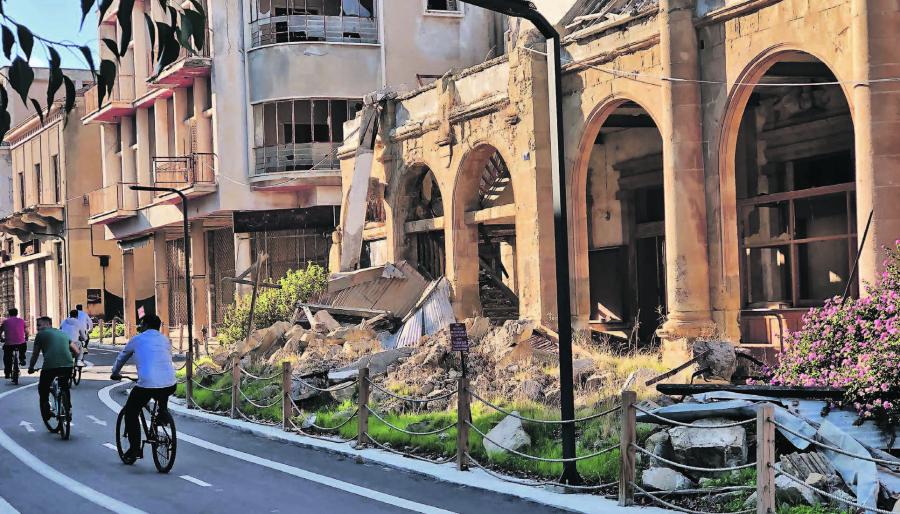
The first image is a barbed-wired closed door guarded by three men in plainclothes. They are soldiers and do not allow photography. Behind the door, a grassy street with abandoned shops. On the right, the lively city keeps up the pace. On the left, the confinement is confirmed by a wall of rusted barbed wire, bushes, prickly pears piercing the frosted curtains, jasmine, rusted barrels and sandbags that prevent even the eye from crossing the "inside" of the confinement. Kilometers of barbed wire of the enclosed, uncared for, empty city. The roofs and half the wall of a church can be seen.
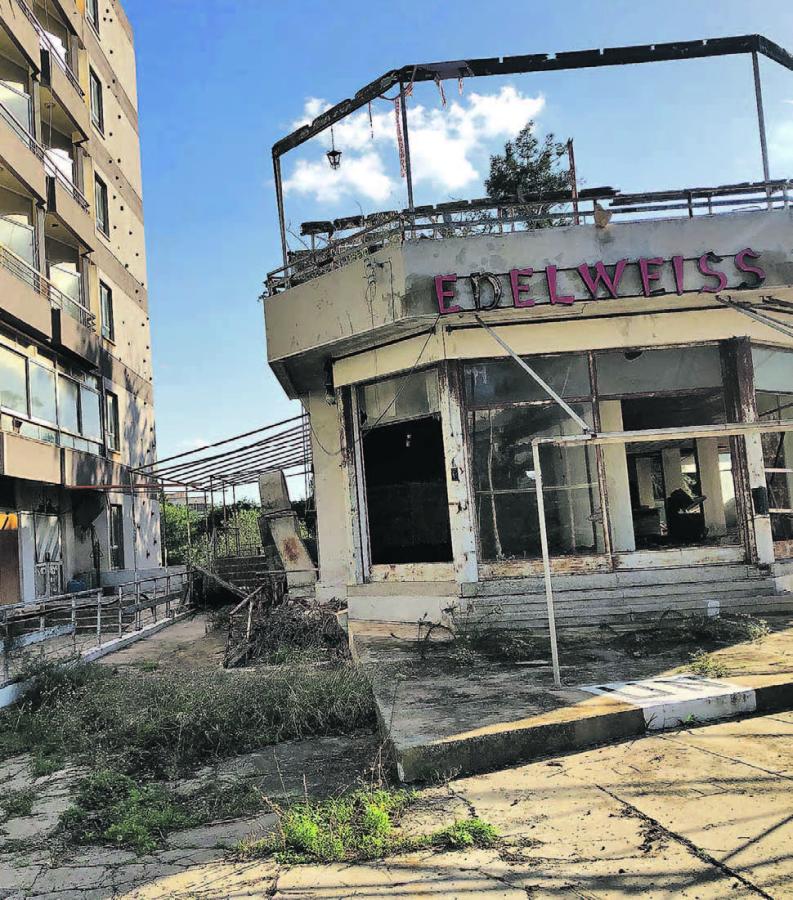
Construction of two roads and drone for surveillance
Famagusta has been loyal and uncared for for 46 years. In October 2020, the Turkish occupying army badly paved two central streets of the enclosed city - that of Democracy and Kennedy Street -, built bicycle lanes in a dead city, operated a refreshment stand in the intermediate public space between the Gymnasium and Lyceum of Hellenes of the city and renovating a madrasah. The goal is said to be the gradual colonization of the city starting with public spaces. Policed city, except the guards are in plainclothes and bikers. Dozens of Turkish Cypriot visitors who swim in the clear blue waters of a small beach and are guided through the once cosmopolitan streets of Varosi. I wonder what their tour guides tell them. The city is like a theater set or a movie set or like an amputated hand, which is not separated from the rest of the body, ready to be reattached.
The huge sandy beach with the houses on the sea just as a background in the photography. Drones on constant vigilance. Swimming is allowed in a horseshoe. Abandoned hotels on the beach, cranes in hotels under construction mark the huge tourist development of the city which hosted 80% of Cyprus' tourists at the time. Frozen time. The blue street signs on the upper corners of the sandstone houses with the immortal Greek names are the city's identity. The rusted, half-demolished, painted signs at the entrances of buildings that have no glass, doors and windows, but allow you to see marble interior staircases, lofts, plaster ceilings, betray the wealth and growth that the city knew during the invasion and possession.

Imprints of wealth
Democracy Street. It used to be alive with life. Today two-story mansions in the Bauhaus style, wooden rectangular doors with remains of locks, marble balconies and inside the carcass of the houses rubble and garbage. Not a single photo on the walls. Branches of foreign banks with signs in English (Barclays) still standing, travel agencies with posters of tourist destinations, offices of Olympic and Cyprus Airways, the bookstore of Pavlos Kyriakos ransacked, but with an ageless sign, the Edelweiss confectionery, which once it was like a mansion living room. Fashion stores, toy stores, prints of wealth. The cinema of Hatzihampi, one of the six in the city, is fenced with wood and rubble, while inside, under tons of dust, the plush seats are still there.

On the adjacent plot, the two-story Municipal Library and the lofty Art Gallery, with its balconies and large windows, the one that housed the works of great painters, proof of the spiritual life of the place once upon a time. The facade of the neoclassical building of the six-grade Gymnasium of Famagusta is covered with two huge red and white flags - Turkish and Turkish Cypriot -, with the forecourt, in ruins, "conversing" with the Greek Lyceum which is directly opposite and once hosted philological discussions and a children's theater since 1930. The vertical streets on the two main avenues are blocked off with red ribbons, but our gaze wanders to houses and churches, where eucalyptus, jasmine and bougainvillea remain alive if untended. Hope flutters beneath the barbed wire of captivity. Nosto, the anticipation of the return mix with the feeling of shame for the ghost town.
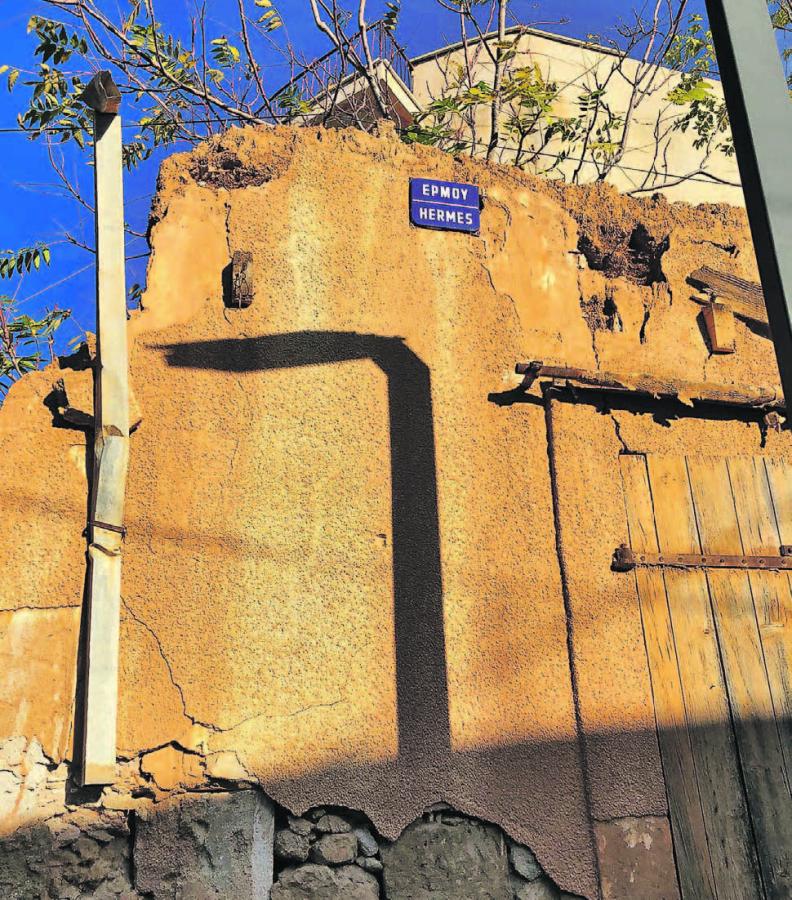
Source: AUGHI newspaper / Alexandra Christakaki
